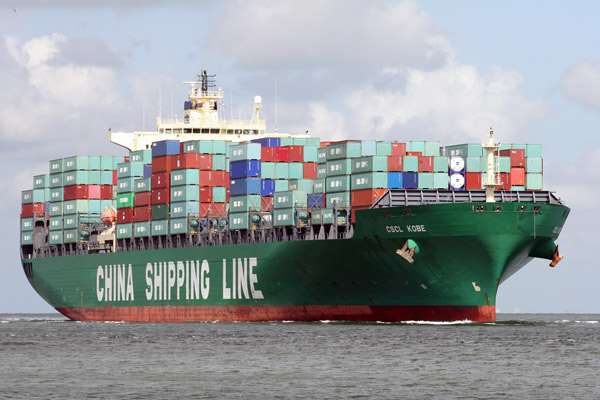Chinese Overseas Direct Investment Turns Towards OBOR As Beijing Pledges USD2 Trillion In Purchases

 Chinese Overseas Direct Investment (ODI) is being increasingly aligned with the countries OBOR plans, meaning attempts to woo the billions of dollars in China’s foreign reserves are not going to be significantly re-invested in the West, according to plans laid out at the this weeks OBOR conference in Beijing. A document released at the conference states that China will be making investments of USD150 billion to OBOR countries, and be importing product of USD2 trillion from them within the next five years. To support this initiative and direct China’s future purchasing and consumer habits, the country is also instigating an annual China International Import Expo each year, commencing 2018.
Chinese Overseas Direct Investment (ODI) is being increasingly aligned with the countries OBOR plans, meaning attempts to woo the billions of dollars in China’s foreign reserves are not going to be significantly re-invested in the West, according to plans laid out at the this weeks OBOR conference in Beijing. A document released at the conference states that China will be making investments of USD150 billion to OBOR countries, and be importing product of USD2 trillion from them within the next five years. To support this initiative and direct China’s future purchasing and consumer habits, the country is also instigating an annual China International Import Expo each year, commencing 2018.
Western businesses expecting China to open up its domestic markets need to take heed – China has stated that the Expo, although “open to all” will promote a “unilateral trade system to develop a more dynamic, sustainable and inclusive globalization, and that special attention will be given to less developed countries.” The statement went on to indicate that China was willing to participate in free trade zones along the OBOR routes and expected to source some USD2 trillion of products from OBOR within the next five years, while at the same time investing some USD150 billion in OBOR projects.
This directly challenges Western assumptions that China will be a large investor in the West. In fact, China’s ODI trends have already been geared towards the OBOR routes. Back in November, in the article “Chasing China’s Outbound Investment” I noted that China’s 2015 ODI spend according to the Chinese National Statistics Bureau, counted just USD5 billion invested in the United States, and USD7 billion in the EU. By comparison, China had invested USD14 billion into Latin America – three times as much as it had in the US.
China’s ODI trade is also increasingly turning towards Eurasia. Bilateral trade with both Russia and the OBOR countries has stepped up considerably – Chinese trade with OBOR was up 26% in Q1 this year while Chinese trade with Russia increased 30%. In a telling statistic, trade between member states of the Eurasian Economic Union (EAEU) also increased, by 38% with the Eurasian Economic Union, rather than the European Union, now being the primary institution that China wishes to have a Free Trade Agreement with. Russia meanwhile has proposed pulling together a Free Trade Area that would include the EAEU together with members of the Shanghai Cooperation Organisation. In solemn contrast, it should be noted that Chinese bilateral trade with the United States and EU is down. I do not believe, in light of the developments I have noted above, that this is a blip.
These initiatives are also not just pie in the sky. China also wishes to unleash the potential of some of its less developed Provinces, and OBOR helps. As an example, a little noted, but significant development occurred at the OBOR conference preliminary meetings, where China and Russia signed off on the Primorye-1 Transport Agreement. On the surface it looks like another attempt to better develop bilateral trade between two backward areas of North-East Asia. In reality, it opens up the weight of Heilongjiang’s agricultural markets to the Asia-Pacific.
These developments are already taking place, and involve direct instructions from Beijing. OBOR is now a cornerstone pillar of China’s investment and development national policy. There will continue to be naysayers and those who seek to discredit the OBOR concept. However, when China instigates a national level policy, and especially one that is directly supported by the Chinese Premier, long term China hands know that investment money and consequent opportunity always follows.
China is serious about its trade with OBOR, is already developing it, and underlying fundamental trends indicate a complete shift in the global dynamics of supply chain manufacturing and sourcing is already underway. As I mentioned in this piece “The Eurasian Economic Union: About To Bring China To The EU Borders” and in this article “Understanding China’s OBOR Free Trade Agreements” businesses in the West have an urgent and serious need to implement new business models to cope with a rapidly changing Chinese overseas investment and purchasing strategy. The question is not now whether a company based in the United States or Europe has a China strategy. It is whether is has an OBOR one.
About Us
Chris Devonshire-Ellis is the Chairman of Dezan Shira & Associates. The firm provides corporate strategy, legal advisory, tax, and corporate structuring activities throughout Asia and Eurasia with offices across the region. For OBOR issues please email silkroad@dezshira.com or visit our website at www.dezshira.com
Related Reading:
Silk Road and OBOR Business Intelligence
Dezan Shira & Associates´ Silk Road and OBOR investment brochure offers an introduction to the region and an overview of the services provided by the firm. It is Dezan Shira´s mission to guide investors through the Silk Road´s complex regulatory environment and assist with all aspects of establishing, maintaining and growing business operations in the region.
DSA 2017 Doing Business In China
Doing Business in China 2017 is designed to introduce the fundamentals of investing in China. Compiled by the professionals at Dezan Shira & Associates in January 2017, this comprehensive guide is ideal not only for businesses looking to enter the Chinese market, but also for companies who already have a presence here and want to keep up-to-date with the most recent and relevant policy changes.
China’s New Economic Silk Road
This unique and currently only available study into the proposed Silk Road Economic Belt examines the institutional, financial and infrastructure projects that are currently underway and in the planning stage across the entire region. Covering over 60 countries, this book explores the regional reforms, potential problems, opportunities and longer term impact that the Silk Road will have upon Asia, Africa, the Middle East, Europe and the United States.








